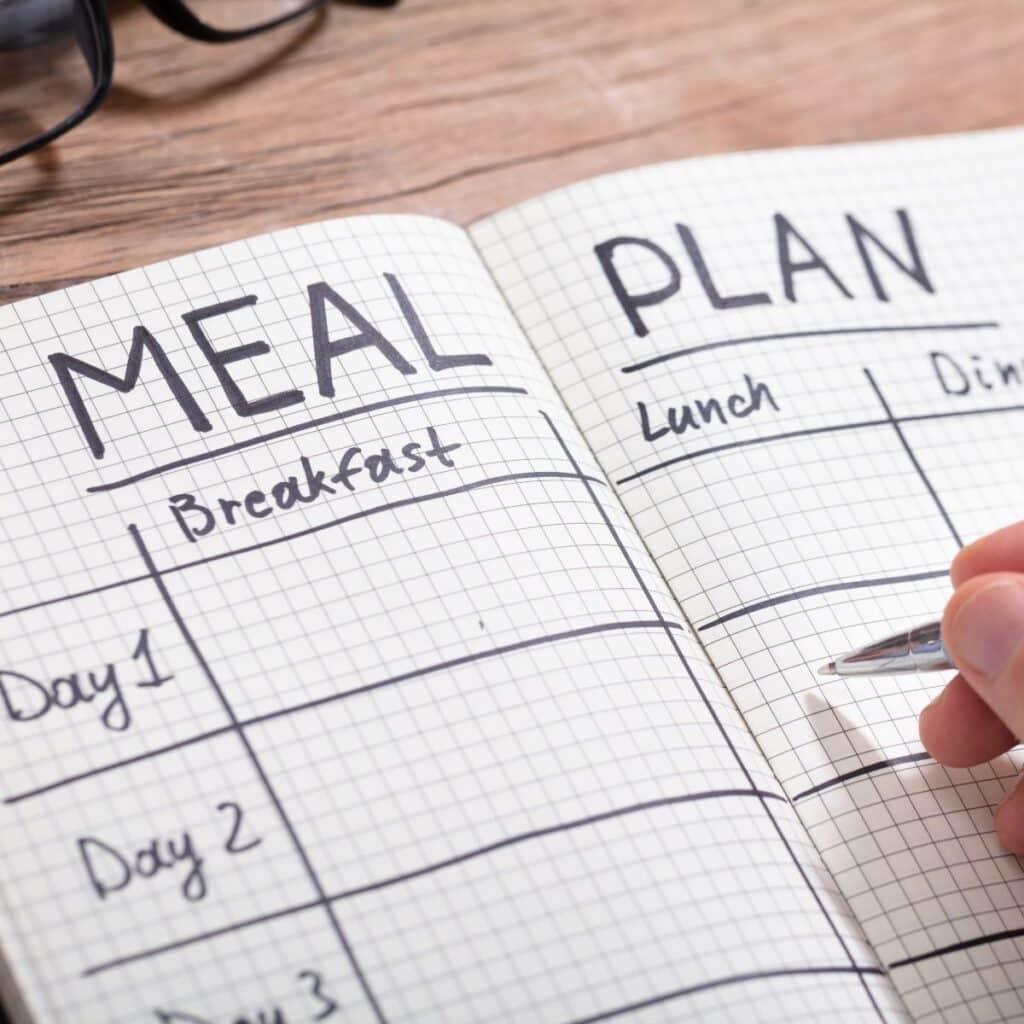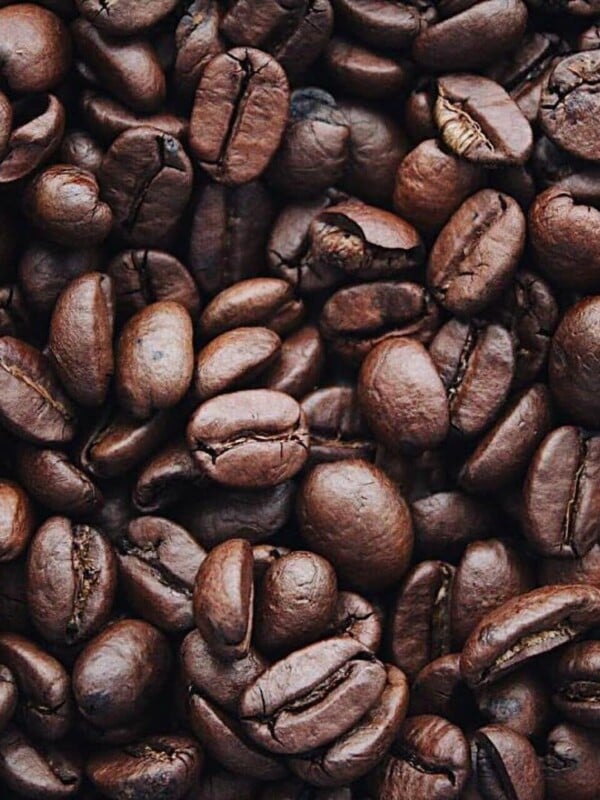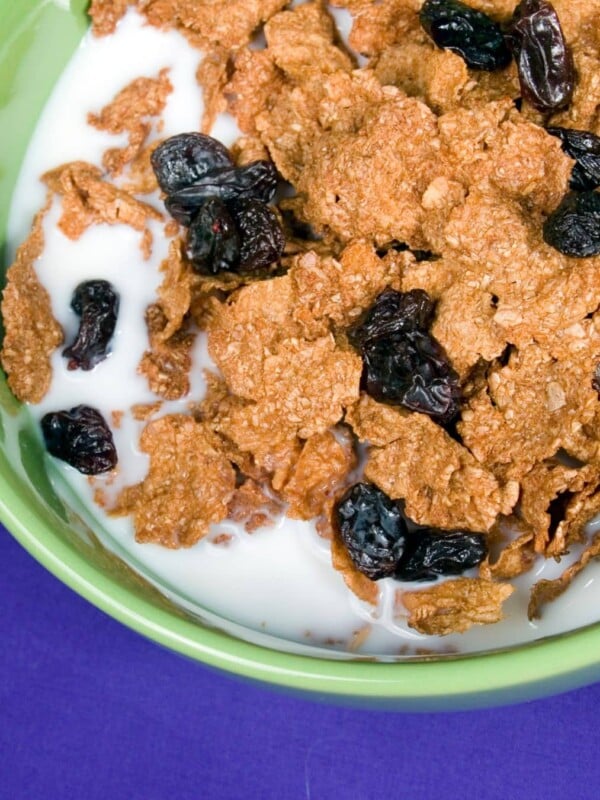This post may contain affiliate links. Please read our disclosure policy.
New diet trends seem to pop up on social media every day, with TikTok leading the charge in bringing buzz-worthy nutrition plans to the forefront. One diet making waves lately is the 90-30-50 Diet Plan. But is it truly the game-changer it’s hyped up to be?
As a Registered Dietitian, I took a closer look at the 90-30-50 method method through the lens of expert nutrition advice. In this article, I’ll explain the key principles, benefits, and practical applications so that you can make an informed decision about whether it’s the right fit for you.
Let’s dive in!

What Is the 90/30/50 Diet Plan?
This plan was designed by registered dietitian Courtney Kassis.
The 90/30/50 diet plan focuses on achieving sustainable weight loss by nourishing your body with enough nutrients instead of approaching it with calorie restriction or calorie counting. The plan recommends a goal for three key nutrients daily:
- 90 grams of protein
- 30 grams of fiber
- 50 grams of healthy fats
Unlike many diets that promote calorie restriction, the 90/30/50 plan prioritizes nutrient balance instead to support long-term health, weight management, and hormonal regulation.
One thing that stands out about this 90/30/50 plan (and likely why it’s so appealing) is it’s simplicity.
Even if a diet plan is not “perfect”, sometimes the simplicity and ease of a strategy can make all the difference in someone’s ability to follow it.
BUT, blanket recommendations are tricky. We all have very different nutrition needs, and assigning the same recommendations to every single person can be risky business.
That said, I think there’s a lot of good about this plan too, so let’s get into it.
A Review of the Key Recommendations
To truly understand the 90/30/50 diet, let’s break down its components, including their potential benefits and challenges.
1. 90 Grams of Protein
Benefits of Protein:
- Boosts satiety by increasing levels of GLP-1 and reducing hunger hormones like ghrelin, helping you feel full longer. Protein is absolutely essential for staying full and satisfied between meals.
- Supports lean muscle mass maintenance, building and repair, which is especially important for those pursuing fitness goals or managing weight. When you lose weight, you lose muscle mass in addition to fat, so it’s important to maintain as much as possible.
- Helps stabilize blood sugar levels when paired with fiber, preventing energy crashes and sugar cravings.
Risks/Potential Concerns:
- The amount of protein that each individual needs is different, so a blanket 90 gram recommendation is over simplified. It’s likely more or less than you personally need. If you’re going to aim for a protein goal, I recommend using a protein recommendation that’s tailored to you.
- For vegetarians or vegans, meeting the 90-gram requirement can be challenging or costly, requiring thoughtful meal planning.
2. 30 Grams of Fiber
Health benefits of Fiber:
- Promotes digestive health and gut health as well as supports regular bowel movements.
- Helps regulate blood sugar by slowing glucose absorption, reducing the risk of insulin resistance.
- Encourages natural weight management by increasing feelings of fullness after meals.
- Can improve heart health and decrease risk of chronic disease, like heart disease. Complex carbohydrates like whole grains and beans are well-researched with health benefits, so eating more of them is a positive!
Risks/Potential Concerns:
- A sudden increase in fiber can cause bloating, gas, or cramps. If you’re not eating enough fiber it’s important to introduce it gradually and make sure you’re drinking enough water, too.
- The recommendations for fiber are at least 25 grams per day for women and 38 grams per day for men. That means men need to include a bit more than this recommendation.
3. 50 Grams of Healthy Fats
Benefits of Healthy Fats:
- Supports hormone balance crucial for appetite control, metabolism, and overall well-being.
- Improves insulin sensitivity, helping the body efficiently use energy.
- Provides long-lasting energy levels and promotes satiety, reducing the likelihood of overeating.
Risks/Potential Concerns:
- Misinterpreting “healthy fats” may lead to the over consumption of saturated fats. It’s important to make sure you know the difference before counting your fat grams. Healthy fats like olive oil, avocado and nuts are recommended over animal fats.
- It can contribute to excessive caloric intake if not paired with portion control and balanced meals.
- Counting grams of fat is typically a bit more challenging than counting grams of protein for most people.
The bottom line: These recommendations are over-simplified. But, I think that’s kind of the point. Most people want simple, easy to follow, and easy to remember. This diet plan provides that option.
Nutrition experts would agree that people are not eating enough fiber, protein, or healthy fats. It may not be perfect, but I do think there’s huge value in a simple plan that gets you to prioritize those essential nutrients.
Protein, fiber and healthy fats all help to balance blood sugar which can provide a positive effect (and prevention) for many health conditions on top of weight management benefits.
While the general recommendations are definitely over-simplified and not exactly right for everyone, sometimes an over-simplified plan can be the kick off that someone needs to prioritize healthy eating.

Why This Diet Stands Out
Why has this diet become SO trendy? Well, unlike restrictive “all-or-nothing” diets, the 90/30/50 plan offers a pretty flexible yet structured framework for someone on a weight loss journey. It encourages whole, nutrient-dense foods, helping you make sustainable changes rather than yo-yo dieting.
Is the 90/30/50 diet effective, safe, and worth trying? Here’s my take.
The Pros
This diet shifts the focus away from calorie counting and emphasizes nutrient adequacy. By prioritizing protein, fiber, and healthy fats, it aligns with research-backed recommendations for weight management, blood sugar regulation, and overall health with a plan that is simple.
Unlike many restrictive diets, there’s also no calorie targets, which is appealing too. While weight loss goals do come down to calories in and calories out, calorie counting can be overwhelming and can often cause major feelings of restriction and deprivation, defeating the purpose.
Most people are not eating as much protein as they need in addition to healthy fats or fiber. Prioritizing those nutrients in any capacity is going to positively influence your health and weight management. For that, I think this plan can be incredibly helpful.
As I mentioned, the recommendations are over-simplified, but I do think there’s value in that sometimes. Following something that’s easy to remember and simple can be a game changer, especially when you’re first getting started.
The Cons
The macronutrient ratios are the same for everyone, and the reality is that we all have different needs based on age, lifestyle, etc. If you’re looking for a diet specifically tailored to you, this isn’t it.
It’s also not a whole lot different than macronutrient counting, where you’re assigned a particular amount of grams, protein, carbs and fats to aim for each day. Both options require tracking, but traditional macro counting is more tailored toward your individual needs.
While the premise is good, you could end up overeating or under eating because of the way the diet is structured. There’s also no guidelines around carbohydrates which could be confusing.
Individuals with specific medical conditions, such as kidney disease or high cholesterol, should consult a healthcare professional before jumping into this plan. It also requires an initial learning curve for meal planning and tracking. However, these challenges are manageable with practical tools and support.

Is the 90/30/50 Diet Realistic?
The short answer: sure! I think for some people, this diet plan could be a good fit that’s realistic to follow. I especially like that there’s no emphasis on calorie restriction and instead prioritizes eating enough of important nutrients.
But, while the diet’s focus on balance and whole foods is appealing, its success largely depends on your willingness to plan meals and track intake. Apps like MyFitnessPal can make tracking easier, but tracking in general isn’t for everyone.
If you’ve ever struggled with an eating disorder, tracking of any kind isn’t generally recommended unless you’re specifically doing it with a healthcare provider like a dietitian, one on one.
Frequently Asked Questions
- Who is the 90/30/50 method suitable for? It’s ideal for anyone seeking to manage their weight and improve overall health without extreme restrictions (and doesn’t want to do more rigid tracking like calorie or macro counting). It’s likely okay for most but always check any new diet plan with your doctor before jumping in.
- Can vegetarians or vegans follow this plan? Yes, it sounds like that’s no problem. However, hitting the protein targets will require a bit more planning with plant-based options like tofu, meatless alternatives and lentils.
- Do I need to track everything I eat? Yes, tracking is essential for hitting the targets here.
90-30-50 diet plan for beginners
One of the positives is that there’s no restriction on your food choices exactly or recipes you choose, so here’s a quick 90-30-50 diet plan for beginners using easy recipes! Each of these recipes prioritizes protein, fiber, healthy fats, or all three! Simply choose an option from each category and go from there. Add a side salad, veggie, or protein when needed.
Breakfast:
- Cottage Cheese Egg Bake with high-fiber cereal
- Chocolate Chip Cookie Baked Oatmeal with your favorite fruit
- Sheet Pan Eggs for Sandwiches
- The Best High-Fiber Smoothie Recipe
- Coffee Chia Protein Pudding
Lunch
- High Protein Cottage Cheese Tuna Salad on high-fiber bread
- BLT Chicken Salad
- Big Mac Wrap
- Kale and Broccoli Salad with your favorite protein (e.g., rotisserie chicken)
- Cottage Cheese Egg Salad
- Healthy Cowboy Caviar
Snack
- Pumpkin Cottage Cheese Dip
- Easy Dark Chocolate Covered Walnuts
- Cheesy Cottage Cheese Bread
- Charcuterie Skewers
Dinner
- Buffalo Chicken Tater Tot Casserole
- Alfredo Meatballs with Greek Yogurt Alfredo Sauce
- Chicken Sausage Broccoli Stir-Fry Recipe
- Cilantro Lime Shrimp Wraps
- Tacos with Peppers (Veggie-Packed Tacos!)
That’s a Wrap
My takeaway as a dietitian? I think that the 90/30/50 diet plan can be a good option for someone who wants some very simple structure with flexibility to kick off their healthy eating.
Eating enough lean protein, more fiber, and more healthy fats is almost always going to be a good idea.
If this helps you do just that, yay! There is SO much value in prioritizing those key nutrients in both weight management and optimal health.
If you choose to jump into this diet plan, you just have to remember that these numbers aren’t tailored exactly to you, so I wouldn’t stress if you’re not perfect. And again, that’s likely the point. Keeping a plan simple is often the difference between being able to do it or not.
More reviews
Do you enjoy being more informed about the latest trends? My work is not done: there are so many products and programs to talk about. Here’s a few more articles for you to check out.














It looks like a very healthy diet.
Hi I struggle with my weight loss cause I have menopause and over active thyroid, would this diet be ok for me to get my weight off.please could you let me know.